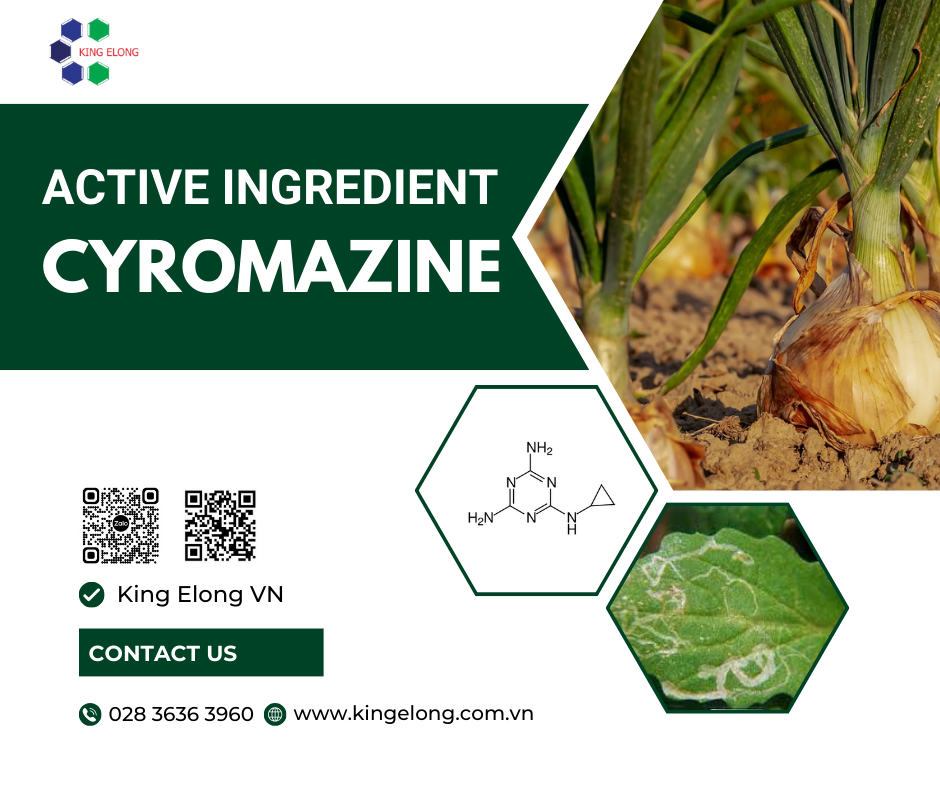Cyromazine belongs to the triazine family of insecticides and is derived from melamine. However, while most triazines are herbicides, cyromazine is an insect growth regulator (IGR). It is used to control insects and mites.
How does Cyromazine work?
Although its exact mechanism is not fully understood, Cyromazine is believed to affect the nervous system of insect larvae, preventing them from molting and maturing. This makes it effective against flies, mosquitoes, leafminers, and their larvae.
Applications of Cyromazine
Cyromazine is widely used in agriculture to protect various crops such as beans, celery, onions, root vegetables, leafy vegetables, and cucurbits. It is also used for ornamental flowers, landscapes, and as a seed treatment for bulb onions.
One advantage of Cyromazine is its safety for beneficial insects. It is used to treat manure, prevent fly development in poultry and livestock houses, and protect sheep and lambs from blowfly larvae. Besides, this active ingredient is also employed in public health for mosquito control.
For the environment, Cyromazine is a safe choice due to its highly selective mode of action. It only targets harmful insect larvae, sparing beneficial insects like bees, butterflies, and ants. This helps to protect biodiversity and maintain ecosystem balance. However, in accordance with WHO standard, since Cyromazine belongs to toxicity class III, users should be careful when using products containing it.


